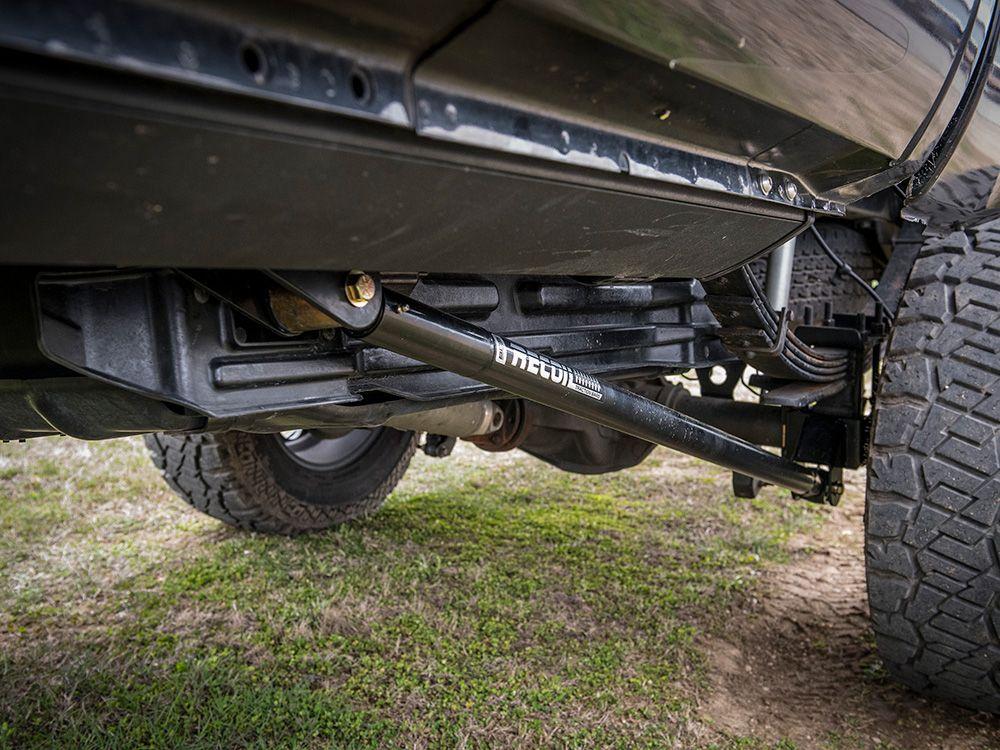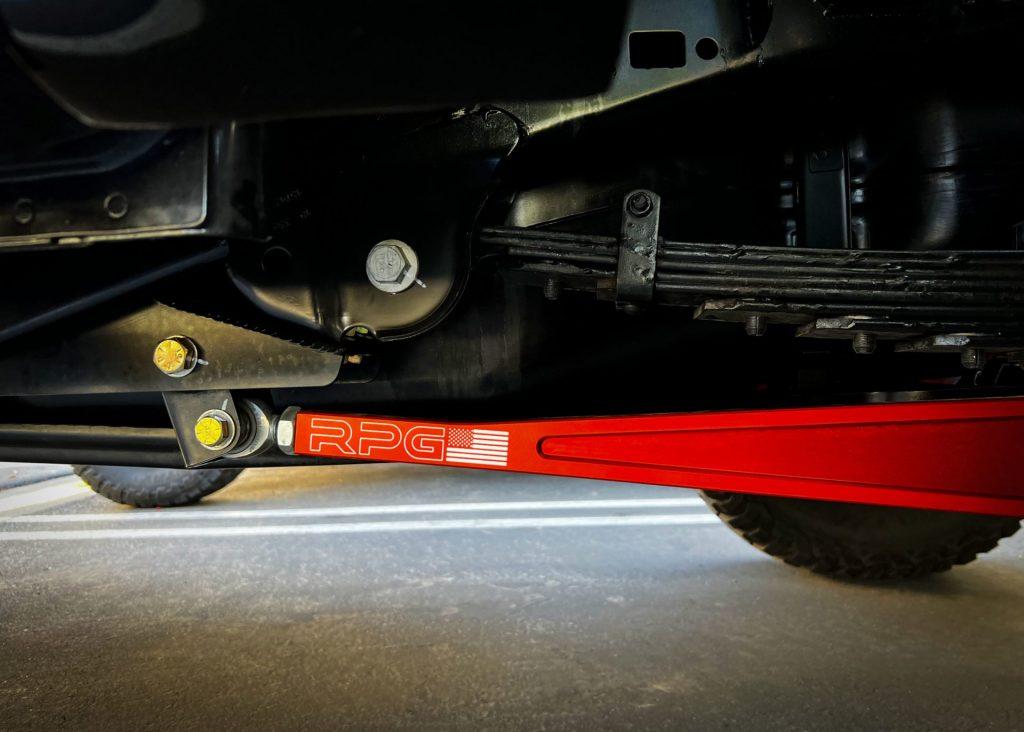Can You Offroad with Traction Bars?
By Sebastian Orellana
Updated Feb 18, 2024

Traction bars are offroad equipment that can help improve the performance and safety of vehicles when driving in challenging terrain. This post will explore the use of traction bars for offroading, including discussions on their purpose, advantages and disadvantages, installation, and maintenance.
Table of Contents
Purpose of Traction Bars

Traction bars are designed to reduce axle wrap, which is a phenomenon that occurs when an off-road vehicle's suspension and differential are pushed beyond their limits. The traction bars are designed to prevent axle wrap by limiting the degree to which the axle can twist and flex.
This will reduce the stress on the vehicle's suspension components, helping keep it from suffering damage and improving its overall performance.
READ: What Suspension Does Tesla Use?
Advantages and Disadvantages of Offroading with Traction Bars
The primary benefit of offroading with traction bars is the improved performance of the vehicle. Traction bars will help to reduce axle wrap, which in turn will improve the vehicle's stability and handling. In addition, they can help reduce the wear and tear on the vehicle's suspension components, helping to extend the car's life.
Advantages of Off-roading with Traction Bars

Off-roading is an exciting activity that requires vehicles to traverse terrain not accessible by regular automobiles. Traction bars are a vital component of off-roading, providing several advantages to those looking to explore off-road trails. This paper will cover the advantages of off-roading with traction bars, including improved stability, better control, and increased safety.
Stability
One of the primary advantages of off-roading with traction bars is improved stability. Traction bars are designed to limit the amount of axle wrap, which can cause the axle to twist and destabilize the vehicle. As a result, the wheels are better able to remain in contact with the ground, which increases stability, traction, and control. Additionally, traction bars can reduce the stress on the suspension components, reducing the risk of breakage and providing a smoother ride.
Control
Another advantage of off-roading with traction bars is improved control. Traction bars help to reduce wheel hop, which can cause the vehicle to become unstable and difficult to control. The bars provide a more even power distribution, ensuring that all four wheels receive equal power and torque. This helps to keep the vehicle balanced and more predictable, allowing for more precise handling and control.
Safety
Finally, off-roading with traction bars can also increase safety. Traction bars help to reduce the amount of axle wrap and wheel hop, which can cause the vehicle to become unstable and difficult to control. This helps reduce the risk of rollovers and other accidents, allowing the driver to take on rugged terrain confidently. Additionally, traction bars help reduce the stress on the suspension components, reducing the risk of breakage and increasing safety.
Disadvantages of Off-roading with Traction Bars

However, there are some drawbacks to offroading with traction bars. For one, they can be expensive to purchase and install and require regular maintenance and periodic replacement. Additionally, they can add weight to the vehicle, reducing its performance.
Increased Stress on the Frame
Traction bars can put additional stress on the vehicle's frame due to the added weight of the bars and the extra stress they put on the suspension components. This can cause the structure to flex and lead to premature wear and tear. The increased stress on the frame can cause it to bend or crack, leading to further damage.
Increased Wear and Tear on Suspension Components
The added weight of the traction bars can also cause increased wear and tear on the suspension components. This can lead to premature failure of the components and decreased performance while offroading. Additionally, the increased wear and tear can result in increased noise and vibration while driving.
Potential Damage to the Underside of the Vehicle
Another disadvantage of using traction bars while offroading is the potential damage to the vehicle's underside. The bars may come into contact with rocks, tree roots, and other obstacles, which can cause scratches, dents, and other damage. Additionally, the bars may become dislodged from the axle or frame, which can lead to further damage.
Difficulty in Adjustment
Traction bars are adjustable, but they can be challenging to adjust. This can be especially true if the bars are installed incorrectly or the terrain constantly changes. Additionally, adjusting the bars can require special tools, which can be challenging to find.
Installation of Traction Bars

The installation of traction bars can be a complicated process and should be done by a professional. It is essential to ensure that the bars are installed correctly, as incorrect installation can lead to premature wear and tear or even damage the vehicle's suspension components.
READ: What Is The Quickest Electric Car on the Market Today?
Maintenance of Traction Bars
The traction bars' maintenance is essential to ensure they continue performing as expected. Inspecting the bars periodically for signs of wear and tear and replacing them when necessary is important. Additionally, it is essential to inspect the mounting hardware for signs of corrosion or damage and to replace worn or damaged hardware.
READ: How Much Horsepower Does An LS1 Have?
Conclusion
Traction bars can be a wonderful offroad accessory for improving a vehicle's performance, safety, and durability when driving in challenging terrain. However, they can be expensive to purchase and install and require regular maintenance and periodic replacement.
It is essential to ensure that they are installed correctly and regularly inspected and maintained. With proper installation and maintenance, traction bars can help ensure your vehicle is ready to take on any off-road adventure.
